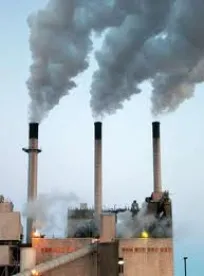EPA Publishes Proposed Rule Regarding Disposal Of CCR From Electric Utilities: EPA published a proposed rule on February 20, 2020, that would establish a streamlined and efficient federal permitting program for the disposal of coal combustion residuals (CCR) in surface impoundments and landfills. 85 Fed. Reg. 9940. The proposal includes requirements for federal CCR permit applications, content, and modification, as well as procedural requirements. EPA would implement the permit program directly in Indian Country, as it does other Resource Conservation and Recovery Act (RCRA) programs, and at CCR units located in states that have not submitted their own CCR permit program for approval. EPA will hold a virtual public hearing on April 15, 2020. Comments are due April 20, 2020.
EPA Proposes Not To Impose Financial Responsibility Requirements For Facilities In The Chemical Manufacturing Industry: On February 21, 2020, EPA published in the Federal Register a proposed rule that would not impose financial responsibility requirements for facilities in the chemical manufacturing industry under Section 108(b) of the Comprehensive Environmental Response, Compensation, and Liability Act (CERCLA). 85 Fed. Reg. 10128. Section 108(b) addresses the promulgation of regulations that require classes of facilities to establish and maintain evidence of financial responsibility consistent with the degree and duration of risk associated with the production, transportation, treatment, storage, or disposal of hazardous substances. As required by CERCLA Section 108(b), the proposed rule assesses the need for financial responsibility requirements for the chemical manufacturing industry. EPA has posted a fact sheet for the proposed rule.
EPA And Partners Announce Collaborative Implementation Of The National Water Reuse Action Plan: On February 27, 2020, EPA Administrator Andrew Wheeler, U.S. Department of the Interior Secretary David Bernhardt, U.S. Department of Agriculture Secretary Sonny Perdue, and White House Council on Environmental Quality Chair Mary B. Neumayr joined federal, state, tribal, local, and water sector partners to announce the National Water Reuse Action Plan: Collaborative Implementation (Version 1). According to EPA’s press release, the actions that EPA and its partners commit to in the Action Plan will help strengthen the sustainability and security and resilience of U.S. water resources by creating new partnerships, providing accountability, and promoting communication and transparency with a new online platform. The press release states that the Action Plan supports the Presidential Memorandum on Promoting the Reliable Supply and Delivery of Water in the West and will help advance water reuse technology that has the potential to ensure the viability of U.S. water economy for generations to come. The Action Plan frames the business case that water reuse is a viable and growing means of supporting the U.S. economy and improving the availability of freshwater for farmers, industry, communities, and ecosystems. The Action Plan identifies 37 specific actions across 11 strategic themes to be led by a spectrum of federal, state, local, and private sector interests. The Action Plan reflects new partnerships, generates action through more than 200 initial implementation milestones, and provides accountability through transparency and routine progress updates.
EPA Proposes Amendments To Closure Provisions For Disposal Of CCR: On March 3, 2020, EPA proposed to amend its regulations for the disposal of CCR from electric utilities under RCRA. 85 Fed. Reg. 12456. EPA is proposing procedures to allow facilities to operate with an alternate liner for existing CCR surface impoundments. EPA is also co-proposing two options to allow the use of CCR during unit closure, and it is also proposing an additional closure option for CCR units that are being closed permanently by removal of CCR for exceeding groundwater protection standards. Finally, EPA is proposing requirements for annual closure progress reports. EPA will hold a public hearing on April 9, 2020. Comments are due April 17, 2020.
EPA Announces Preliminary Regulatory Determination For Contaminants On The Fourth Drinking Water Contaminants Candidate List: On March 10, 2020, EPA announced the preliminary regulatory determination for contaminants on the fourth drinking water contaminants list. 85 Fed. Reg. 14098. The Safe Drinking Water Act (SDWA), as amended in 1996, requires EPA to make regulatory determinations every five years on at least five unregulated contaminants. A regulatory determination is a decision about whether or not to begin the process to propose and promulgate a national primary drinking water regulation (NPDWR) for an unregulated contaminant. A preliminary regulatory determination lays out and takes comment on EPA's view about whether certain unregulated contaminants meet three statutory criteria. After EPA considers public comment, EPA makes a final determination. The unregulated contaminants included in a regulatory determination are chosen from the Contaminant Candidate List (CCL), which the SDWA requires that EPA tublish every five years. EPA published the fourth CCL (CCL 4) on November 17, 2016. This document presents the preliminary regulatory determinations and supporting rationale for the following eight of the 109 contaminants listed on CCL 4: perfluorooctanesulfonic acid (PFOS), perfluorooctanoic acid (PFOA), 1,1-dichloroethane, acetochlor, methyl bromide (bromomethane), metolachlor, nitrobenzene, and Royal Demolition eXplosive (RDX). The Agency is making preliminary determinations to regulate two contaminants (i.e., PFOS and PFOA) and to not regulate six contaminants (i.e., 1,1-dichloroethane, acetochlor, methyl bromide, metolachlor, nitrobenzene, and RDX). EPA seeks comment on these preliminary determinations. EPA is also presenting an update on three other CCL 4 contaminants (strontium, 1,4-dioxane, and 1,2,3-trichloropropane). Comments must be received on or before May 11, 2020.



 />i
/>i
